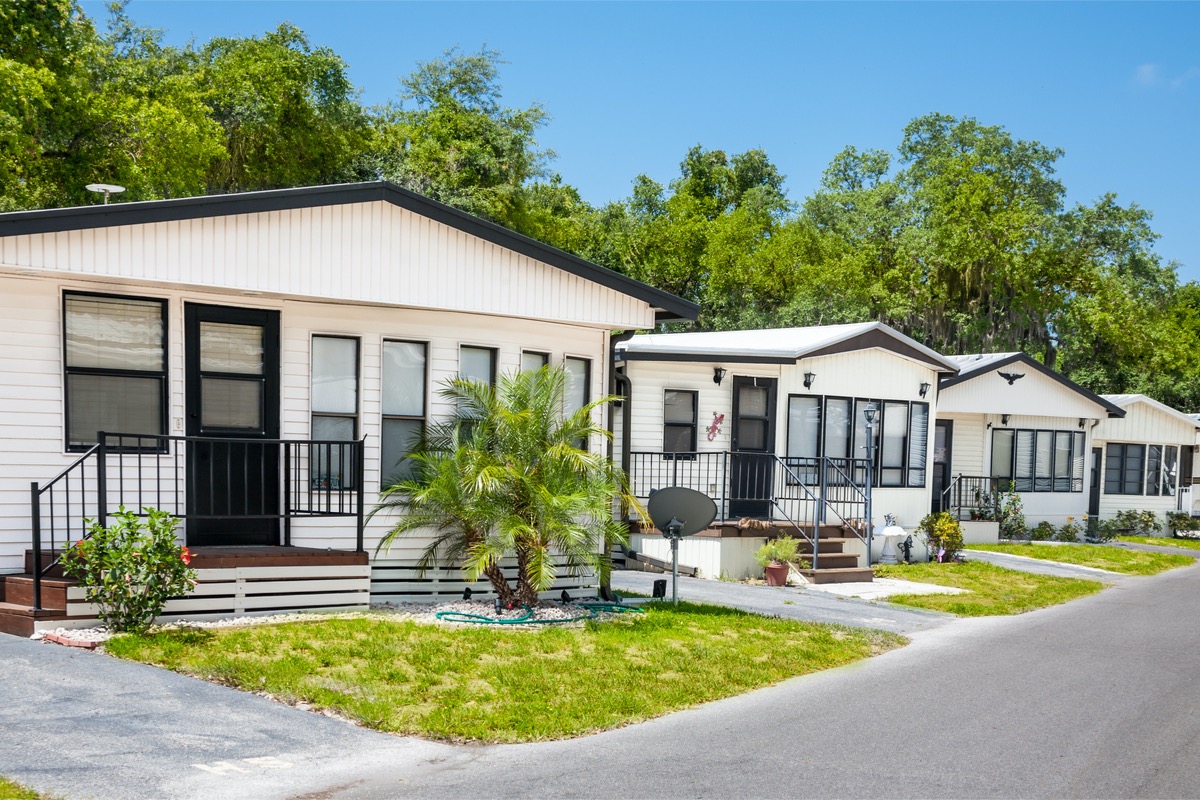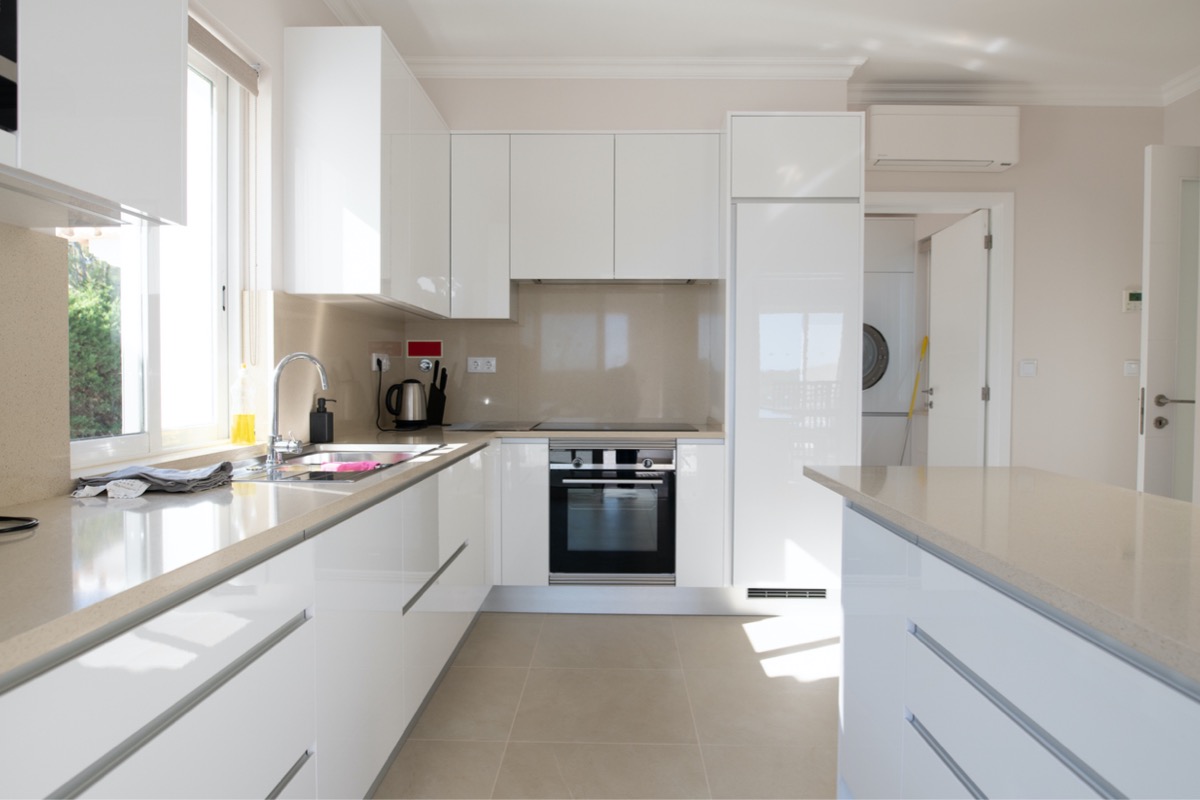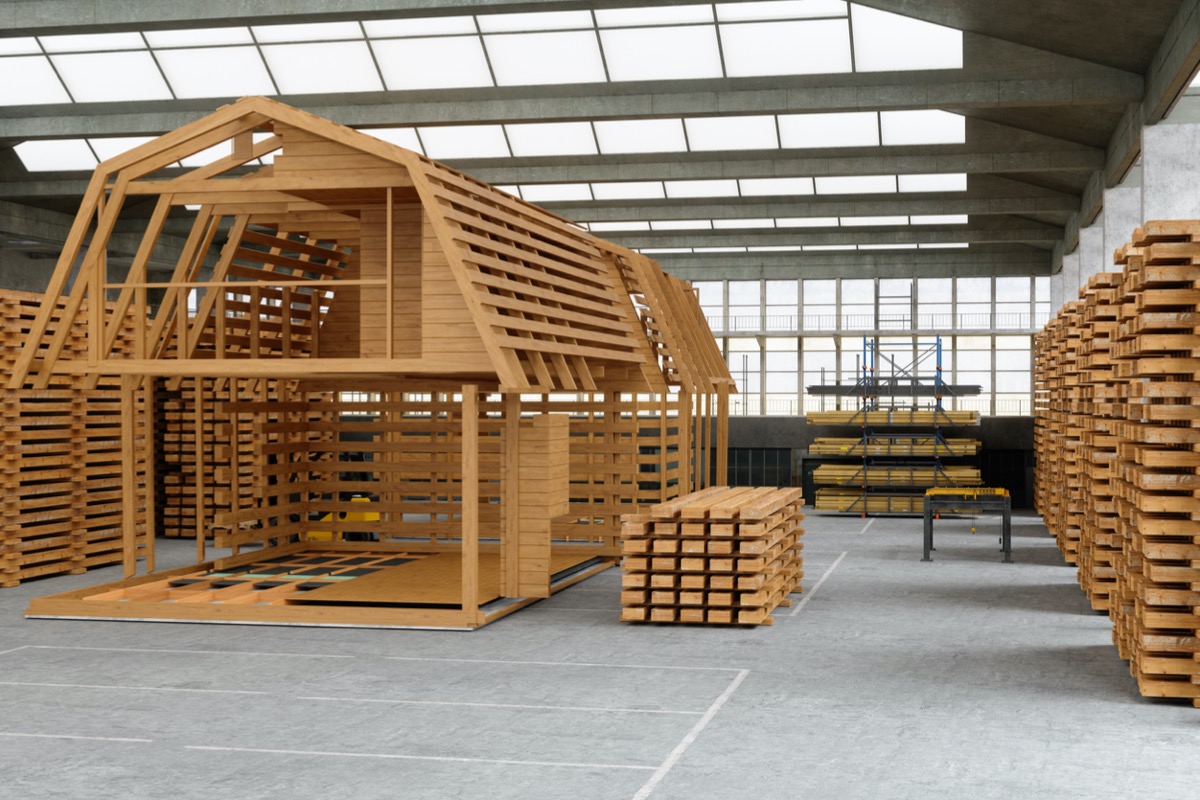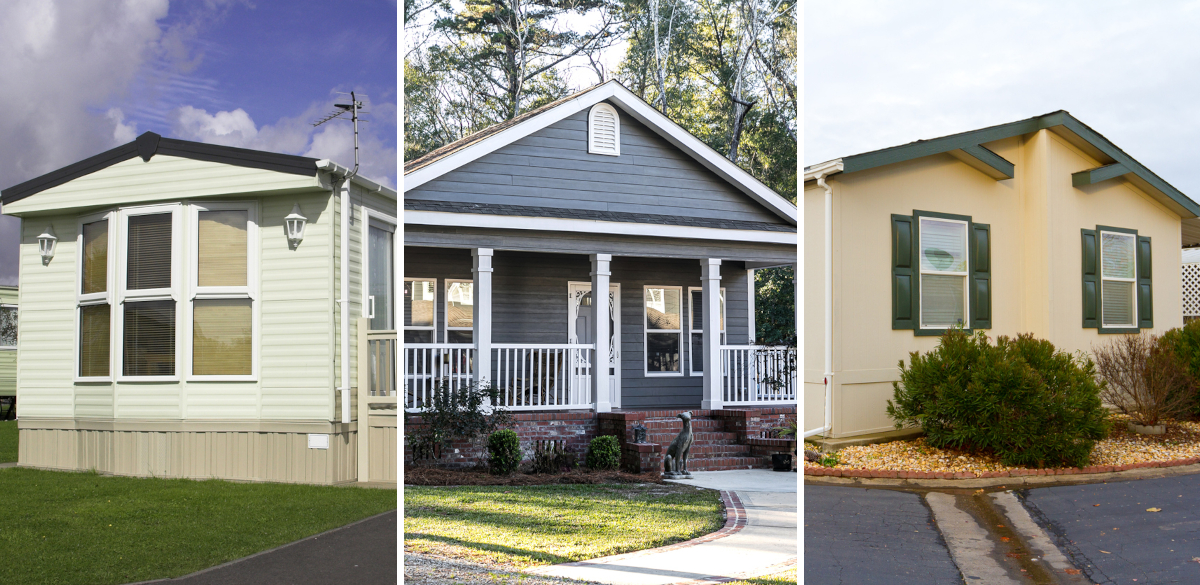We may earn revenue from the products available on this page and participate in affiliate programs. Learn More ›
Mobile, manufactured, and modular homes are all types of prefabricated homes. These “prefab” homes are built in a factory, rather than completely on-site like a traditional home. Once complete, the prefabricated pieces of the factory-made home are brought to its final location to be assembled. Since mobile, manufactured, and modular homes sound so similar, you may be left with questions about how they differ.
So, what is the difference between a manufactured home and a modular home? When considering a manufactured home vs. mobile home, how do they compare? Continue reading to learn some of the key differences among a mobile home vs. manufactured home vs. modular home.
RELATED: 5 Things to Know Before Buying Land to Build a House
What is a mobile home?
Mobile homes became popular in the early and mid 1900s. They were seen as a viable option for people who needed to relocate to find work, but still wanted to be able to provide a stable home for their families. The original mobile homes looked similar to trailers or campers. They had an exposed coupler for a trailer and wheels. These features made it easy to hook up the mobile home to a vehicle and move it to a new location.
These original mobile homes are not built anymore, because they don’t meet the standards set in the National Mobile Home Construction and Safety Act of 1974 and the HUD Manufactured Home Construction and Safety Standards released in 1976. A mobile home makeover may transform the interior of an older mobile home, but it likely still won’t meet these updated standards.
What is a manufactured home?
The construction process for a manufactured home takes place almost exclusively in a factory. Once complete, the parts of the home will be brought to the home site to be assembled. Manufactured homes are available in three sizes: single section, double section, and triple section.
Even though most manufactured homes are not moved after assembly, it is possible to move this home type if it has a pier and beam foundation. After the Housing Act was passed in 1980, any ‘movable’ homes that were built after 1976 (when the updated HUD standards were passed) began to be referred to as manufactured homes, rather than mobile homes, in federal law and literature.
While the phrase ‘mobile home’ is still commonly used outside of the federal government, one key difference between a mobile home and a manufactured home is that HUD standards have grouped all types of movable, factory-built housing as manufactured. The department outlines the energy, wind, and snow standards this type of home must meet.

What is a modular home?
While modular homes are also built in a factory, they are built in pieces and then assembled at the home site. Modular homes are constructed to meet a state’s and local municipality’s building codes. This means that modular homes will be held to the same regulations that on-site constructed homes are held to in the city or county. Since different states, or even cities, may have different codes and regulations, modular homes can vary from one location to the next.
Regardless of a modular home’s location, one thing that is consistent with their construction is that they are placed on a permanent foundation; modular homes are not designed to be relocated once completed. Some modular homes may even be placed over a foundation with a basement. Once a modular home is assembled, it will very closely resemble an on-site built home. Modular homes offer a variety of layouts and floor plans, with both one-story and two-story options.
RELATED: How Much Does It Cost to Build a House?
Modern manufactured and modular homes offer many more design and efficiency options compared to mobile homes of the past.
Choosing to build either a modular or manufactured home will afford you numerous design options. Builders can offer multiple floor plans and layouts. Additionally, you may be able to customize all of your home’s details, from the exterior style and materials to the interior appliances, cabinets, hardware, flooring, and paint colors.
Many energy-efficient options will often come standard, or be available as upgrades, from a modern prefabricated home builder. These options may include smart thermostats, energy-efficient windows and doors, and even solar panels. Choosing to increase your home’s energy-efficiency with some of these features will not only help save you money on electric bills, but it may also help to decrease the home’s environmental footprint.

Manufactured homes can be moved, whereas modular homes are built on permanent foundations.
One key difference between modular and manufactured homes is that manufactured homes have the potential to be moved. When needed, qualified manufactured home moving companies can prepare your home for a move and safely relocate a manufactured home to a new location.
If you have a multisection manufactured home, the sections will need to be carefully split back into the original two or three sections and loaded onto a specialized trailer. Before planning to move mobile manufactured homes, however, there are a few details you may want to consider, including the age and condition of the home and whether your home will meet all of the local zoning regulations in the new location. For example, some towns or cities may have limits on the areas where manufactured homes are permitted.
When comparing modular homes vs. manufactured homes, this movability feature is one of the big differences. Modular homes cannot be moved once they are in place and assembled. This type of prefabricated home is constructed over a permanent foundation and is not designed to be taken apart or moved again.

Both manufactured and modular homes cost less than traditional site-built homes.
As you’re comparing manufactured homes vs. modular homes, keep in mind that either option will cost significantly less than purchasing a traditional built-on-site home. There are a few reasons for the big price difference. First, because a modular home and a manufactured home are both built in factories, the construction cost tends to be much lower than for homes built on-site. Additionally, there are fewer construction delays due to weather that slow down the process and increase the total cost for a traditionally-built house.
If you are planning on financing your home purchase, there is another key difference between modular and manufactured homes you may want to consider. There are often more financing and loan options for modular homes than for manufactured homes. Getting a loan for a manufactured home can be more challenging as not all lenders offer financing or mortgages. Generally, the value of a manufactured home will depreciate more quickly, while the value of a modular home follows the housing market.


